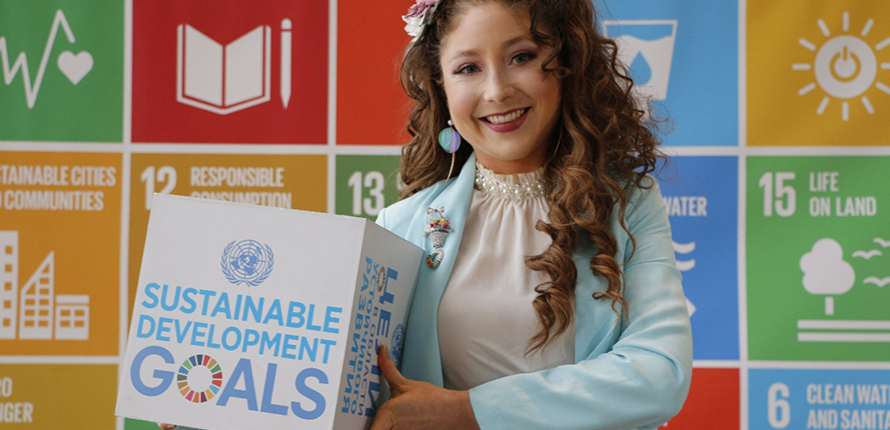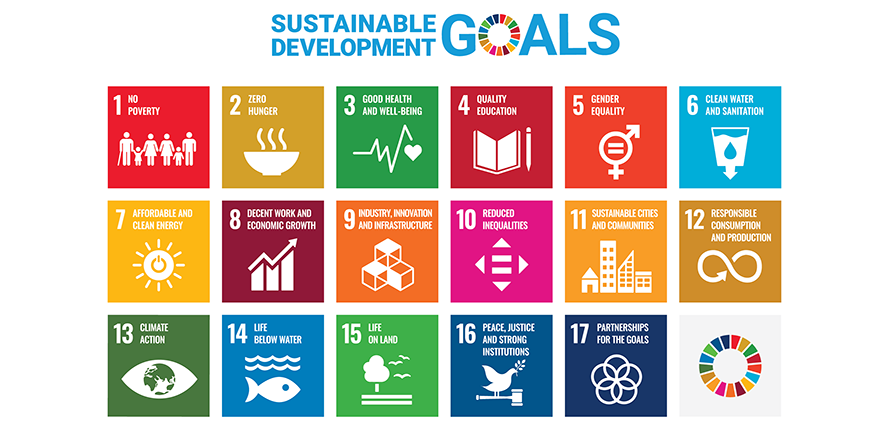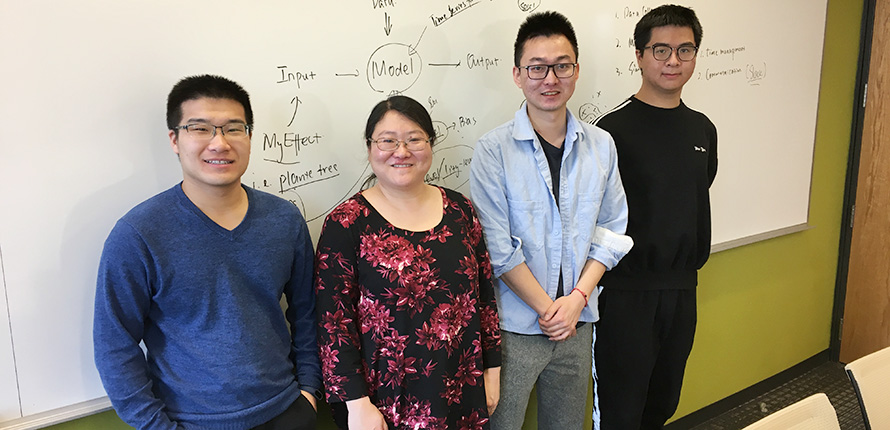We use cookies on this site to enhance your experience.
By selecting “Accept” and continuing to use this website, you consent to the use of cookies.
Search for academic programs, residence, tours and events and more.
May 7, 2020
Print | PDFWhen academia and industry unite, it can lead to productive partnerships. Lovell Corporation and Wilfrid Laurier University have formed a partnership that may even help to change the world.
Since 2018, Associate Professor Xu (Sunny) Wang and her Laurier research team have been collaborating with Lovell Corporation to develop a new impact measurement framework for its mobile app, MyEffect. All actions on the app will be mapped to the United Nations’ Sustainable Development Goals (SDGs) – an ambitious set of 17 targets related to issues including poverty, climate change and peace – allowing individuals and organizations to track and share their contributions to specific goals.
Kelly Lovell founded Lovell Corporation, a Kitchener-based global youth consultancy and innovation firm, when she was just 19 years old. After years of fostering social entrepreneurship and growing her network to reach young innovators in more than 60 countries, Lovell was invited to share her expertise with the UN. She is currently serving on several UN advisory boards, including the UN Volunteers’ Global Task Team for SDG Acceleration, that are working to achieve the SDGs by 2030.
 Kelly Lovell
Kelly Lovell
“My passion is bridging opportunities between industries and generations to create a better future," says Lovell. "I’ve been advocating for decision-makers to acknowledge the importance of fostering youth-led innovation to achieve the SDGs. We want to empower young people to get involved in their communities, but a clear pathway and a framework to bring individuals together is needed. How do we localize the SDGs to make them approachable and measure if we’re moving forward?”
Lovell quickly realized that in order to engage young people and measure the tangible impact of their efforts, they would need to turn the SDGs’ largely qualitative indicators into quantitative measurements. She decided to create an impact measurement framework for MyEffect, an app her company was developing to help young people and organizations find and track volunteer opportunities, then earn points for their positive contributions to society. The framework would recommend task-based activities that individuals could do in their communities to contribute toward the global SDG targets.
To build a user-friendly impact measurement framework, Lovell needed data science expertise, which led her to Wang in Laurier’s Department of Mathematics.
“Kelly came to me with the idea for MyEffect and asked us to develop a model that will quantify individual voluntary actions,” says Wang. “For example, you plant a tree. How do we measure your action against the goal to sustainably manage forests? We had no idea. That was the gap.”
Wang assembled a team of master’s students* to start collecting data and designing a model for the app.
“In the beginning, we had to collect vast amounts of information,” says Wang. “We were pulling data from Statistics Canada, Environment Canada and the UN, but discovered that the data was aggregated and not detailed enough for us. So we had to look for other sources. It was a great opportunity for our students to analyze real-world data.”
Lovell’s team shared resources and software with the students and she drew on her connections to help them find elusive information. Even still, it was a challenging process to match localized data points with 17 global targets.

“It was much more complex than we expected,” says Hongda Hu, a PhD candidate who started working on the project as an undergraduate student in Laurier’s Lazaridis School of Business and Economics. “We want every Canadian city to have their own scoring systems and models. So if you live in Waterloo and Waterloo already has enough trees, then planting a tree will result in fewer points. This ensures that volunteer efforts are meaningful to each local community.”
Once Wang’s team developed a model, they needed to test it. They created detailed simulations to mimic consumer behaviour and made sure the app could match users with relevant volunteer opportunities.
Throughout development, Wang and her students met with Lovell every other week to share updates and strategize. Presenting complex information to a “client” was a formative experience for the students.
“Meeting with Kelly helped us improve our communication skills,” says Hu. “We had to explain our work clearly and ensure that the model was mathematically correct, yet easy to understand. The first time we presented to her, we all just waited to answer her questions. Now when we meet, everyone wants to talk.”
 Shaowen (Jason) Liu, Xu (Sunny) Wang, Hongda Hu and Siyi Wang
Shaowen (Jason) Liu, Xu (Sunny) Wang, Hongda Hu and Siyi Wang
For her part, Lovell was extremely impressed with the students and the model they developed. She plans to continue her partnership with Wang through the next stage of development, which involves validating the model with real customer data.
“I love academic-industry partnerships. I don’t think enough companies do them,” says Lovell. “It’s mostly large companies that are collaborating with the research community, yet it’s smaller companies like mine that tend to gain the most. Working with Laurier gives us access to new expertise and high-quality personnel, and it allows us to invest in the next generation of talent.”
Lovell plans to officially launch MyEffect with its new impact measurement framework by the end of 2020. Thanks to her collaboration with Laurier researchers, she feels hopeful about its potential.
“We have a decade to meet some very ambitious targets and none of it will be achieved unless we take action,” says Lovell. “Young people often think, ‘I’m one person. How can I end global poverty?’ It’s important to empower them and show them that although global poverty is a big problem, if you give four hours of your time to this local food bank, it matters and those actions do trickle up.”
Hu and his fellow students feel equally excited about the project they have worked so hard on.
“I think we are doing something very helpful for Canada and the world,” says Hu. “I think if Kelly can implement our model, it will make a huge contribution and be a huge achievement.”
*To date, Wang’s research team has included five students: Leon Feng, Hongda Hu, Shaowen (Jason) Liu, Jingyi (Jack) Mao and Siyi Wang.